To a certain extent, every country’s diet shows its unique and abundant cultural heritage. So does China. China, as one of the world’s four ancient civilizations, has a proud history and splendid culture. Its diet is mysterious, just like its culture. Chinese people carefully use every inch of land under their feet, and the extraordinary wisdom of getting food is everywhere. From the fertile alluvial plain to the beautiful rivers and lakes, from the cold and barren areas to the high-rise urban, where there is green vitality, where there is harmony between heaven and man. Different from the traditional western animal husbandry and marine culture, China’s culture is farming and land, which has created significant differences in taste and eating habits between China and the West. The following are some introductions.
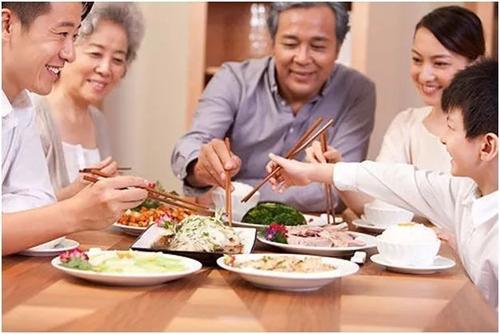
Traditionally, Chinese people are used to sharing meals while westerners prefer being served with individual dishes. Extending the long millennium, the way of sharing meals is almost every Chinese table. People sit around and toast each other. Excellent cuisine is in the center of a table, which reflects the Chinese notion of a union. It is not only the object of appreciation and taste, but also the medium of emotional communication. In addition, the long-term spread of the system is also a reflection of China's emphasis on their blood relationship and their sense of family in the way of eating. Nevertheless, in recent years, people have also found many shortcomings in the system of sharing meals. From SARS in 2003 to COVID-19 in 2019, the Chinese people are aware of some weakness of sharing meals and come up with some ingenious ways. The government encourages their people to eat with serving chopsticks and spoons. Meanwhile, it is also advertised by CCTV---the Chinese most authoritative media. For another example, the Chinese people have also changed the hot pot, which is loved by the whole Chinese people into the form of "one-pot for one person" on the round table, which still shows the concept of "Neutralization" in traditional culture. Besides, China also calls for serving individual dishes, allowing consumers to dine at staggered times and disinfection after each serving. All of these can be a fun experience for foreigners.
Significance is commonplace. We can tell a lot about the different cultures based on cutlery. The chopstick is the quintessential cutlery choice in China while knives and forks are used by westerners. The invention of fork is considered to be the mark of civilization for western food. The function of knife and fork is cutting and the action of cutting from big to small cultivates the westerners thinking from appearance to the essence.
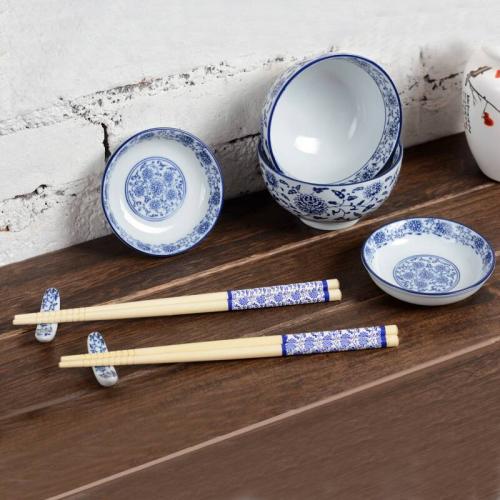
Tableware has been used in China for a long time. The Chinese have been using spoons for about 8,000 years, using forks for about 4,000 years, and using chopsticks are at least 3,000 years, though the exact time to use chopsticks is uncertain. Chopsticks are commonly used in China. They are usually made of bamboo, wood, bone, porcelain, ivory, metal and plastic and other materials. As one of the symbols of Chinese food culture, chopsticks are one of the most commonly used tableware in the world. It was invented in China and later spread to Korean, Japanese, Vietnamese and other Chinese culture circles. Chinese people use chopsticks, while people in Africa, the Middle East, Indonesia and the Indian subcontinent use their fingers to grab food. The earliest chopsticks found in China are copper chopsticks unearthed from Yin ruins in Anyang City, Henan Province. There are also many folk legends about chopsticks. Some people said that Jiang Ziya invented bamboo chopsticks inspired by the Dudievins. Some people said that Daji (an imperial concubine in Shang Dynasty) invented chopsticks with jade hairpins to please King Zhou. And other people said that Dayu invented chopsticks to save time when he was trying to control the water by using branches to get hot food. The average chopsticks are about 22-24cm in length. Because of their handicrafts and traditional crafts, chopsticks are also popular among foreigners. In China, chopsticks are not only used for eating, but also widely used in folk customs such as marriage, funeral and festival. As bamboo grows faster and more widely, many chopsticks are made of bamboo. Some are also made of traditional rosewood, ivory and other precious materials. The shape of Chinese chopsticks is mostly similar to cuboid or cylinder. They have been invented for at least 3000 years, whose one end is round and the other is square representing the old Chinese idea that the earth was square and the heaven was round.
According to Napoleon, there is one step from the sublime to the ridiculous. Dining etiquette is an important step for the development of human civilization. China is always known as a state of ceremonies and our dining etiquette is an irreplaceable part. For example, Chinese attach great importance to the seating arrangement. In a proper meal, they start their dining after all attendees arrive and arrange their seats in line with their age and office. And the position facing the front door and east will deserve the most distinguished guest.
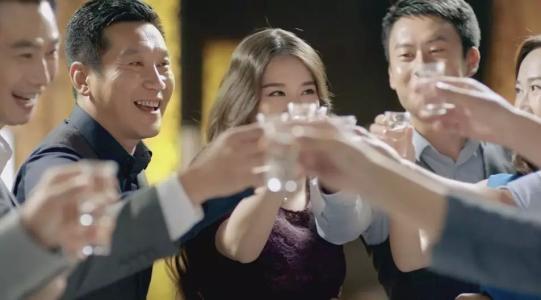
Toasting culture is also important. Toasting refers to the proposal made by the host to the guests to drink for a certain reason. Generally speaking, toasting should be in the order of age, position, guest and host status. We must fully consider the order of toasting and make clear the priority. Before cheering, you can touch the glass with others, symbolically; when touching the glass, you should make your own glass lower than others' to show your respect for him. When you are far away from the other person, you can touch the table with the bottom of your glass or you can clink glasses with the other person. If the host toasts you personally, you should offer to return the favor and have another toast with him. Even if you're drinking with someone you don't know well, you should ask others who he is or what others call him to avoid embarrassment and disgrace. If you can't drink because of lifestyle or health reasons, your relatives, subordinates or juniors can drink instead of you or you can toast with drinks or tea. Like a toaster, you should be considerate of others. When other people toasting you with drink or tea, you should not force the other person.
In western countries, women first have always been a social rule. At the table, the man should open the chair for the woman and let her take the seat first; when dining, the hostess and other women begin to eat before the men can start; after the meal, the men still need to open the chair for the women, let them go first, to show their respect for women.
The use of tables can also indicate the differences between eastern and western cultures. In the west, the serving of individual dishes determines their habits of adapting to long tables.
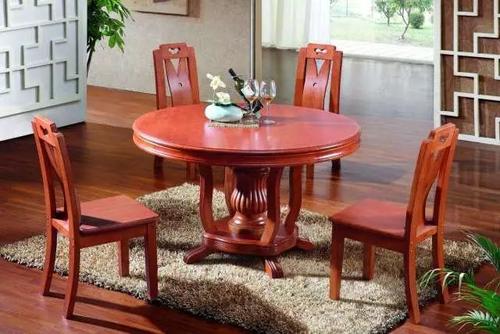
In China, the form of all banquets is everyone sitting around and sharing meals. A round table should be used to create an atmosphere of unity, politeness and common interest. The earliest record of the use of round tables by Chinese people was in the Wei, Jin, and the Southern and Northern Dynasties. Wars promoted the integration of various nationalities, and the round tables were introduced into the Central Plains from nomadic people. Before that, the majority of the aristocratic families in the Central Plains used square tables, and they served as one person each table. After nearly 500 years of development, in the Song Dynasty, chairs were popularized in daily life. People changed from kneeling to sitting on chairs, and corresponding tables were raised accordingly. High-legged tables were widely used and often appeared in banquets. Gradually, sitting together for dinner became a Chinese habit, and the change of furniture brought new manners. In the Qing Dynasty, the round table with a diameter of about 130cm was popular. Moreover, the number of people sitting was 8, and each person took an average seat according to the cutting point of the circle. The round table symbolizes harmonious and good wishes.
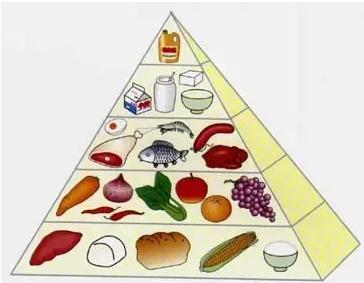
We all know there are some differences between Chinese and Western diets. In China, grain is the staple food. Meat and vegetables are complementary food. In western countries, meat and milk are the staple foods. This different dietary structure is closely related to its different culture and history. At ancient times, China had thought of encouraging agriculture rather than trade. Therefore, agriculture accounts for a large proportion in China, and crops have become the principal food source for Chinese people. Besides, according to a survey by botanists in the west, Chinese people eat more than 600 kinds of vegetables, 7 times as much as in the west. In fact, in China, vegetarian dishes are a common food, which is inextricably linked to Buddhist advocacy. Buddhism regards animals as "living things" and plants as "lifeless", so it advocates vegetarianism.
Many Westerners want to know why many Chinese people like to eat bone-in meats. In fact, the Chinese believe that once you perform an additional process of removing the meat from the bone you are adding one extra step which takes away more of the natural taste of the meat. Chinese people prefer natural stuff with their meat. If you come to China, you might as well try this.
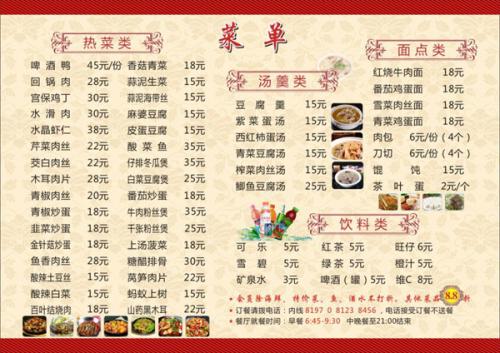
In China, cooking is regarded as the art of spontaneity. We find that when we open Chinese recipes, the Chinese always use a vague expression of the quantity of ingredients and spices, such as “one tablespoon”, “half bowl”, and “a little”, but there is no specific standard for how big a spoon or a bowl is. At the same time, there are more than 30 kinds of Chinese food, such as grilling, frying, roasting, broiling, toasting and baking and so on.
Westerners pay more attention to science and nutrition. They strictly follow fixed procedures and scientific standards throughout the cooking process. On Western menu, the measurement standard should be accurate to "gram". And the cooking methods are basically frying, roasting and boiling.

Chinese believe that living off the land, which is not only an adaptation to local conditions, but also a Chinese way of survival---living in harmony with nature. They consider that every part of a pig is a treasure. Even the pig's large intestine can be the delicacy. There are also many ingredients in Chinese food which are rarely seen in Western food, such as white gourd, Chinese yam, frog and all kinds of viscera. If you come to China for the first time, you may try it. And then you will find that it opens up a new world with a new feeling of color, aroma and taste.

Chinese people believe that civilization should be no judgment of right or wrong. The differences between Chinese and Western diet culture are obvious, and each has its own advantages. With globalization, Chinese and Western food culture will continue to merge in the collision. For all these differences in Dietary Cultures between China and the West, the world is enriched by the differences. Now Chinese food has begun to pay attention to nutrition, health and scientific cooking. Western food also begins to develop towards the realm of Chinese food in color, aroma, taste, meaning and shape. Chinese and Western dietary culture will develop together in exchange. At the same time, Chinese people will conserve and promote cultural traditions, and they welcome visitors from all countries.
After a meal, you will be offered fruit or tea in China, while you will be offered some sweets or cakes in the West. How interesting!